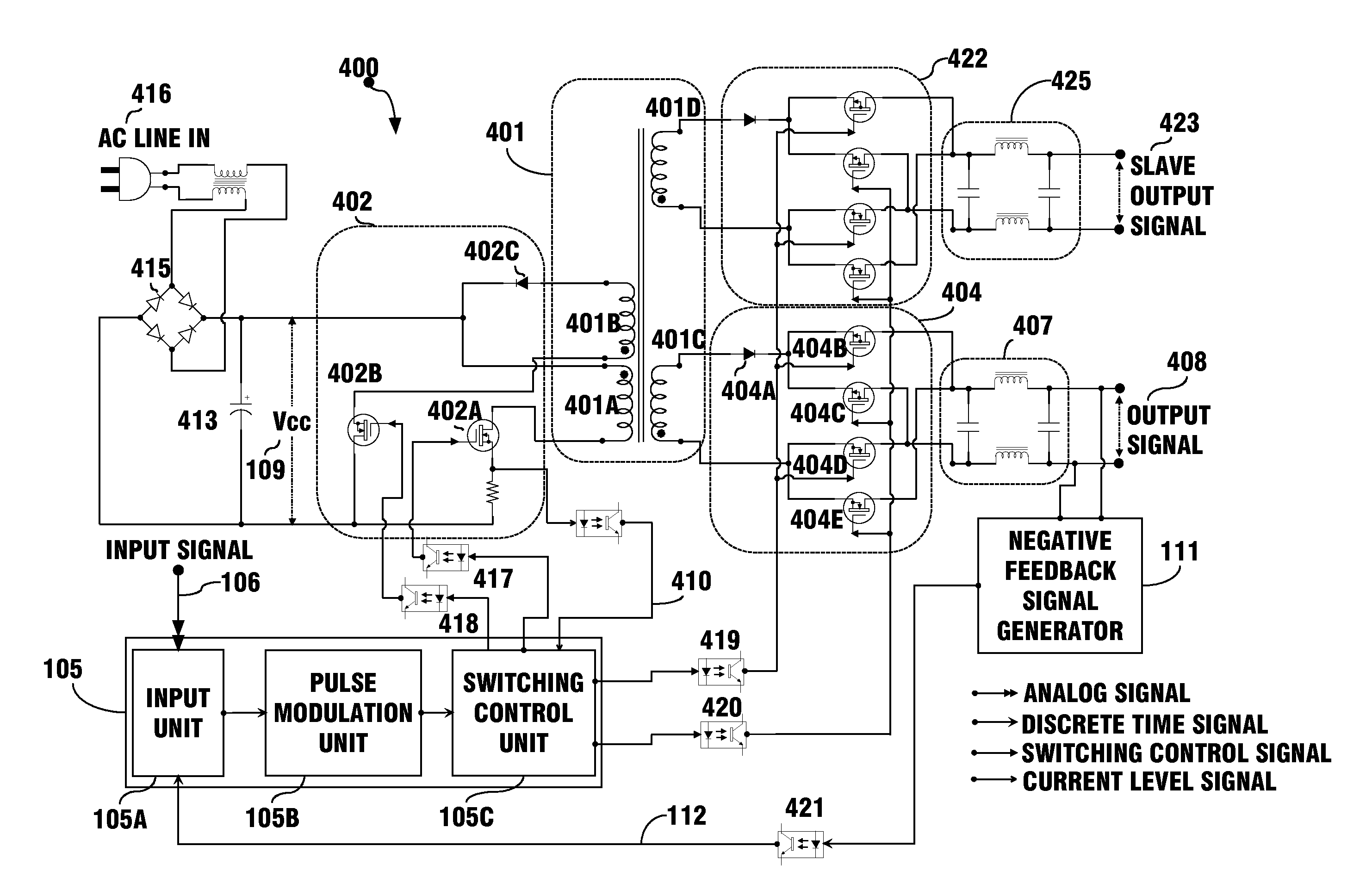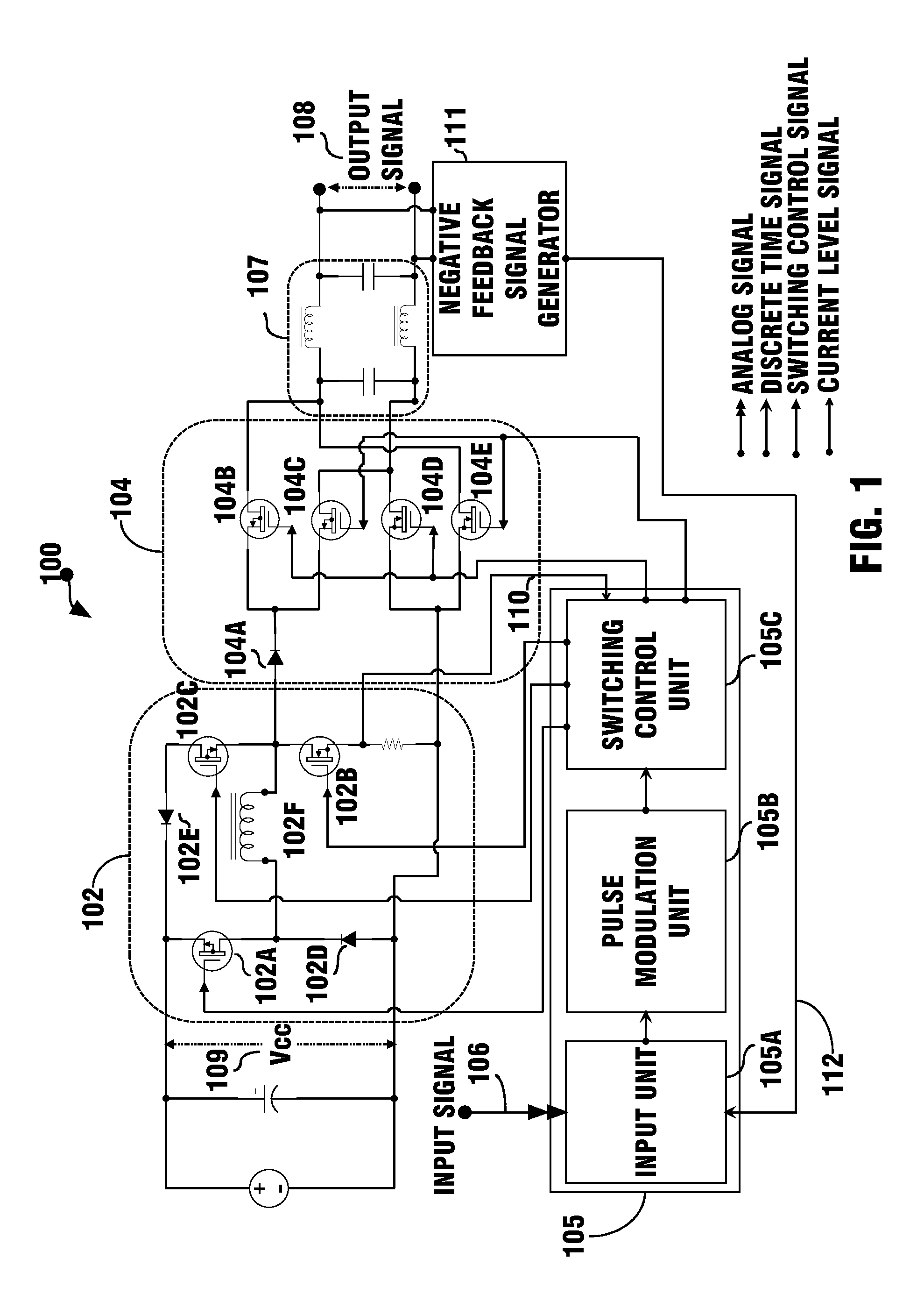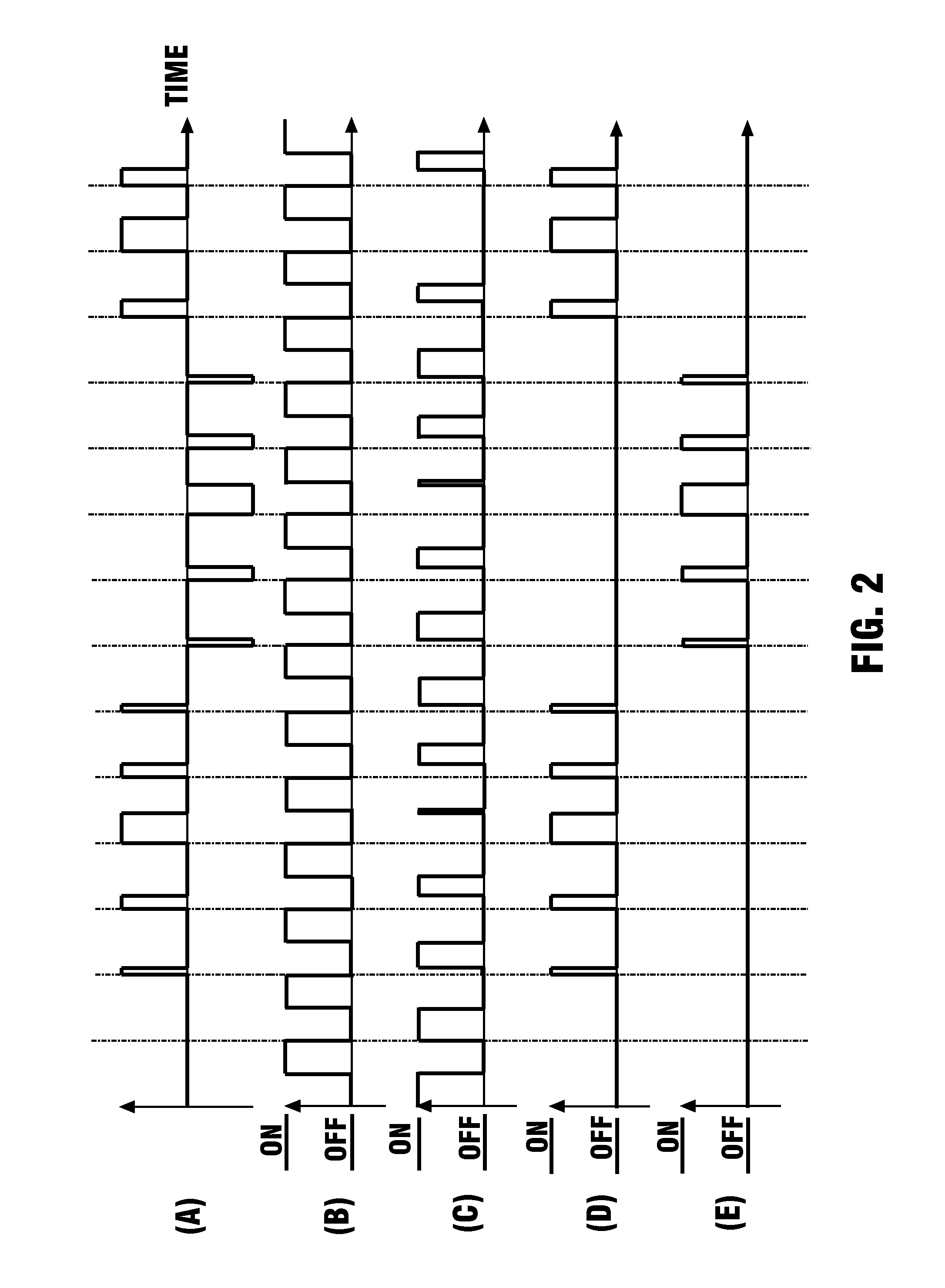Switching amplifier with pulsed current supply
a technology of pulsed current supply and switching amplifier, which is applied in the direction of amplifiers with semiconductor devices/discharge tubes, power conversion systems, dc-dc conversion, etc., can solve the problems of inefficient power usage, excessive losses, and short dead times, and achieve high efficiency.
- Summary
- Abstract
- Description
- Claims
- Application Information
AI Technical Summary
Benefits of technology
Problems solved by technology
Method used
Image
Examples
first embodiment
[0027]FIG. 1 is an exemplary block and circuit diagram illustrating a switching amplifier 100 in accordance with present invention, wherein the pulsed current supply unit 102 using an inductor 102F.
[0028]As illustrated in FIG. 1, the switching amplifier 100 of the present invention for amplifying an input signal 106 having positive and negative polarities is comprised of: a pulsed current supply unit 102 having a plurality of switches for switching a pulsed direct current (DC) current from a direct current (DC) voltage 109; a switching power transmitting unit 104 having a plurality of switches and coupled to the pulsed current supply unit 102 for conducting the pulsed direct current (DC) current positively or negatively; an amplifier control unit 105 for receiving the input signal 106 and coupled to the switches of the pulsed current supply unit 102 and the switching power transmitting unit 104 to control their switching according to the input signal 106; a filter unit 107 to obtain...
exemplary embodiment 100
[0034]In this non-limiting exemplary embodiment 100, the amplifier control unit 105 is a digital signal processing circuit. And it is obvious for a corresponding embodiment of an analog signal processing circuit for the amplifier control unit 105 in accordance with this invention by using an input unit for receiving an analog input signal and a pulse modulator for pulse modulating said analog input signal.
[0035]FIG. 2 are exemplary waveform diagrams illustrating the various waveforms at input and output points of switching control units in the circuits of various figures in accordance with the present invention.
[0036]As illustrated in FIG. 2, a non-limiting exemplary waveform for the pulse modulated signal from the pulse modulation unit 105B is illustrated in FIG. 2(A), since the input signal 106 has first and second polarities; therefore, the pulse modulated signal also has first and second polarities. According to the pulse modulated signal illustrated in FIG. 2(A), a non-limiting...
second embodiment
[0048]FIG. 4 is an exemplary block and circuit diagram illustrating a switching amplifier 400 in accordance with present invention.
[0049]As illustrated in FIG. 4, the switching amplifier 400 of the present invention for amplifying an input signal 106 having positive and negative polarities is comprised of: a pulsed current supply unit having a plurality of switches 402 for switching a pulsed direct current (DC) current from a direct current (DC) voltage 109; a switching power transmitting unit 404 having a plurality of switches 404B, 404C, 404D, 404E and coupled to the pulsed current supply unit for conducting the pulsed direct current (DC) current positively or negatively; an amplifier control unit 105 for receiving the input signal 106 and coupled to the switches 402 of the pulsed current supply unit and the switching power transmitting unit 404 to control their switching according to the input signal 106; a filter unit 407 to obtain an output signal 408 corresponding to the input...
PUM
 Login to View More
Login to View More Abstract
Description
Claims
Application Information
 Login to View More
Login to View More - R&D
- Intellectual Property
- Life Sciences
- Materials
- Tech Scout
- Unparalleled Data Quality
- Higher Quality Content
- 60% Fewer Hallucinations
Browse by: Latest US Patents, China's latest patents, Technical Efficacy Thesaurus, Application Domain, Technology Topic, Popular Technical Reports.
© 2025 PatSnap. All rights reserved.Legal|Privacy policy|Modern Slavery Act Transparency Statement|Sitemap|About US| Contact US: help@patsnap.com



